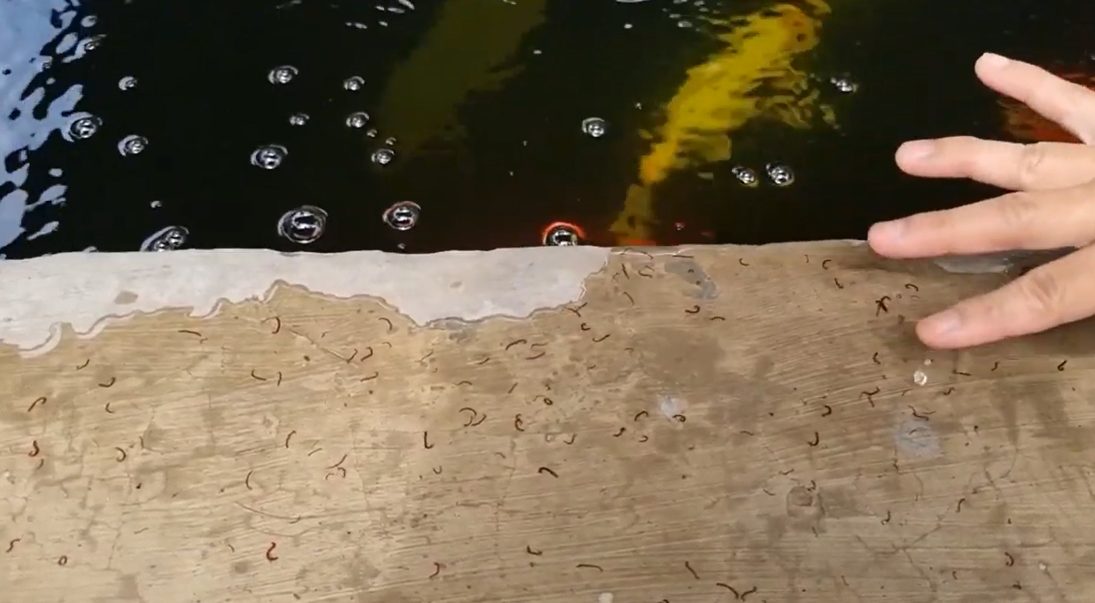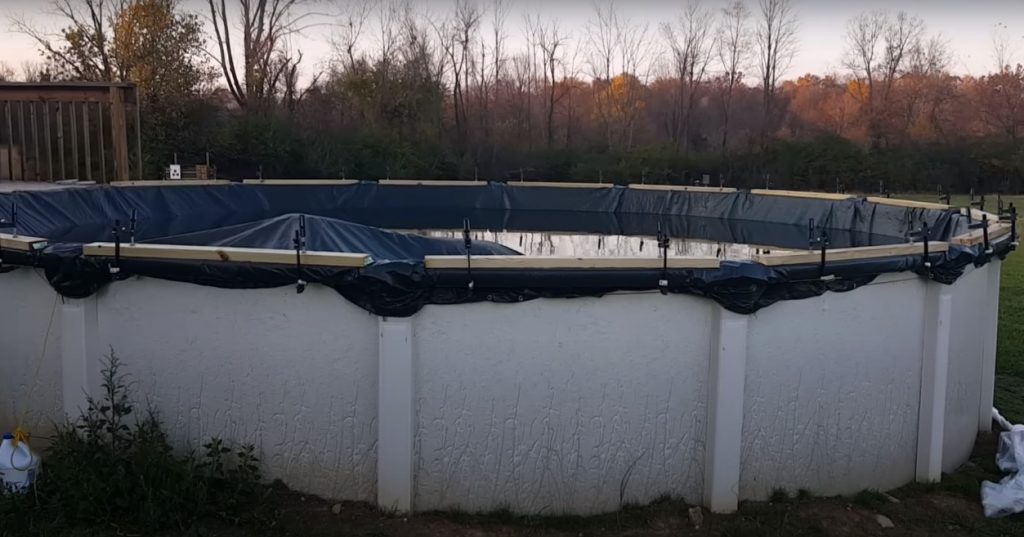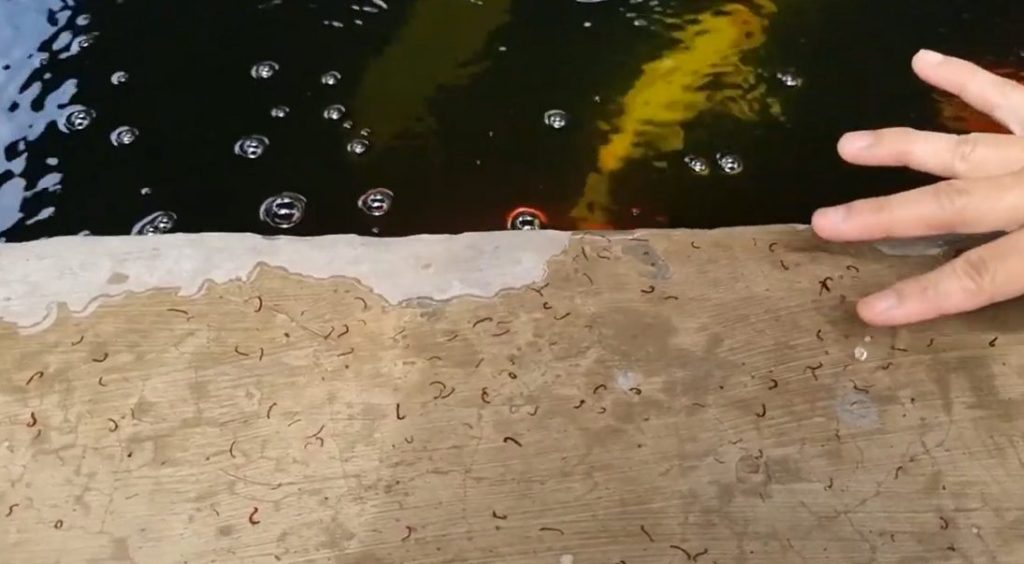Getting rid of worms in your pool can be difficult, but there are a few things you can do to minimize the number of worms in your pool. Taking a few simple precautions can sometimes stop worms from entering your pool altogether.
There’s no one-size-fits-all solution to getting rid of pool worms, but there are plenty of great ways to reduce their numbers or get rid of them entirely. In this article, I’ll walk you through a few strategies for making your swimming pool less worm-friendly and keeping them out for good.
How Different Worms Get Into Your Pool
There are a few ways that worms can end up in your pool. This has to do with the type of worm in question. There are three types of worms that you should be aware of: earthworms, bloodworms (red worms), and horsehair worms (Gordian worms).
Earthworms typically get into pools by burrowing into the ground near the pool and then falling in. Bloodworms and horsehair worms, on the other hand, are often carried into the pool by insects or animals that either live near or frequent the pool.
Earthworms
There are many different types of pool worms klosterstrasse, but earthworms are likely the most common and familiar to most people.
They typically inhabit garden soil or damp areas underground, but they also enjoy cool, moist environments like rain puddles on your driveway. You’re most likely to see them after a rainfall.

When leaves end up in your pool, there’s a good chance they made the trek from the landscaping around the pool. They fall in and get stuck because they can’t get out on their own.
Bloodworms
Bloodworms are a type of redworm that can often be found in pools of still water. They get their name from their red color, which is a result of them being in the larvae stage of the Chironomid midge fly.
Midge flies typically lay their eggs on the surface of stagnant water, which then hatches into the bloodworm larvae phase within 2-3 days.
Though they may seem gross, bloodworms are actually harmless to humans. In fact, they are even eaten by fish as part of their natural diet.
Horsehair Worms
Horsehair worms are the third type of worm you may find in your swimming hole.
These worms resemble a long, thin strand of hair. They can be found in a range of water environments, and can also live in very moist soil.
Fear not though, horsehair worms cannot parasitize vertebrates even if you ingest them.
Are Worms A Problem?
Worms have an important role to play in keeping plants healthy when they’re out in nature. By slithering around underground, they help air and nutrients reach roots – much like farmers do when they till the land.
They also eat organic matter and leave behind droppings that make for great fertilizer.
Most people don’t want to find worms in their pool. Worms are more likely to be found in pools during the spring and fall because they like cooler weather.
Rain also encourages worms to come out of the ground. Wet weather can kill pool worms vogel, as many pool owners have experienced.
Worms use receptors instead of eyes to make their way around the world. Unfortunately, these receptors are more sensitive to telling a worm when it’s light or dark outside rather than whether there’s a dangerous body of water lurking in front of them.
However, by working together with other worms, they are able to get a more well-rounded view of their surroundings and make their way through the world safely.
How To Remove Worms From Your Pool
Unfortunately, there’s no perfect solution to getting worms out of your pool once they’ve gotten in. However, there are a few ways you can remove them.
One way is to add a chemical repellent to the water. Another way is to physically remove the worms from the pool.
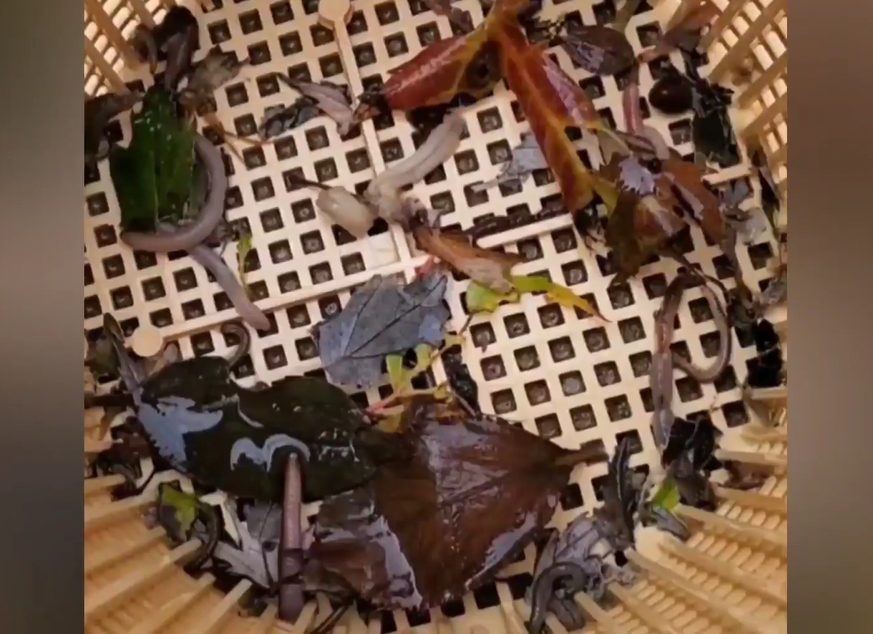
Shock The Pool
The process of shocking a pool with chlorine is done to increase the free chlorine level while also killing off any bacteria in the water. This will also kill most, if not all, of the worms in the pool.
Although it is effective, it is still good practice to clean the pool the old fashioned way to make sure all of the worms are gone. If there are only a few swimming worms for bass, shocking may not be necessary, but it is still a good idea to rid the water of any bacteria they may have contaminated the pool with.
Use A Skimmer Net
The easiest way to get them out of your pool is by using a pool skimmer net or leaf net. You can scoop the worms off the surface of the water with a skimmer net, or at deeper depths off the floor of the pool with a leaf net.
If you need to buy a skimmer net, they cost around $15, and leaf nets will set you back up to $30.
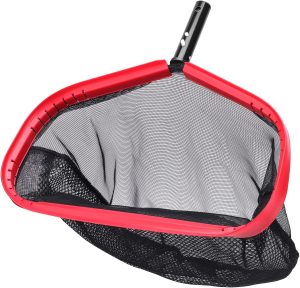
| Package Dimensions | 19 x 17.5 x 1 inches |
|---|---|
| Item Weight | 16 ounces |
| Manufacturer | EPOARTIST |
Suck Them Up With Vacuum
If you want to remove worms from your pool, the best way to do it is with a pool vacuum or cleaner. This will attach to your skimmer and suck the worms up into the basket. Vacuuming them out is also the best way to make sure you catch all of them.
You can also use a leaf vacuum, which comes with an attached mesh bag. Just be aware of the type of vacuum you’re using in your pool, as some can damage delicate finishes like vinyl-liner pools.

Strategies for Keeping Worms Away from Your Pool
Gross things can find their way into your pool – but none are quite as icky as worms. These slimy critters can be tough to remove, and their presence in your pool can make it unsafe for swimming.
Luckily, there are a few things you can do to keep worms out of your pool water. By following these tips, you can help keep your pool clean and worm-free.
Pull Out Your Pool Cover
No one likes dealing with a pool full of worms, but using a pool cover is one of the best solutions.
You might be able to find a happy medium with when to use your pool cover. For example, if you notice that worms tend to drown in your pool when it rains, you only need to use the cover before a storm. You can also keep an eye out for worm patterns with temperatures.
The cooler the temperature, the higher the chance worms will take a dunk in your water. You can also consider purchasing a pool cover that’s designed to keep worms out. Winter covers are often very heavy, and they might not be any more effective than a lighter cover.
Monitor Your Pool After a Storm
If you’re not excited about the thought of using a pool cover to keep worms out of your pool, you can try a different approach. This next method is a bit more hands-on, but it does have the potential to be more effective, depending on your level of commitment.
After a storm, visit your pool to check for any uninvited guests. If you find any worms, you can put on a glove and remove them from your pool deck. Be sure to place them back in the grass, far away from your pool area.
If you don’t like the idea of touching worms, you could try sweeping them off your deck before they have a chance to enter your pool. The key is to catch them early, before the sun comes out and bakes them into the perimeter of your pool.
Redo Your Landscape
The effectiveness of redoing your landscape depends greatly on how you have your pool set up.
For example, if you have a small amount of space between where the deck of your inground pool ends and your lawn starts, there’s little you can do to stop the worms from coming.
However, this method is excellent if you have ten or even twenty feet of concrete or wood space between your pool and yard. In that case, the worms are most likely coming from potted plants you have near your pool.
By simply moving the plants away from the pool, you can eliminate the problem.
If you want to keep the worms away from your swimming area, try moving the pots with the plants farther away from the water (20 feet is best). The worms probably won’t travel that far, so they’ll stay put in the pot.
Create a Platform
If you have an inground pool with a deck that’s level with the ground, you’re practically inviting worms to come hang out. You want a permanent solution that will get rid of almost all of your worm problems, consider creating a ledge around your pool deck.
If your deck is made out of concrete, this means adding more concrete around the edge to form a physical barrier. If your deck is made out of wood, you’ll need to do the same thing with wood.
It’s not as daunting as it sounds—you don’t need to create a huge ledge. Just an inch or two is plenty to keep worms away, since they’re not great climbers.
Use Limestone
Applying crushed limestone to the soil around your pool is an effective way to keep worms out of the water. The reason it works is that limestone increases the soil’s pH level, making it unsuitable for worms.
However, this also means that limestone is not suitable for pool water.
The pH balance in your pool is important to maintain no matter what method of treatment you use. But it’s especially important to keep an eye on if you decide to go with the limestone method.
FAQ For Worms in Pool
Why are there worms in my swimming pool?
Worms and dirt have a close relationship – so close, in fact, that a hard rain can cause worms to evacute their homes upward in an attempt to escape the wet conditions. If your pool is surrounded by dirt and plants, there’s a chance that some of these creatures may end up taking an accidental dip with you.
Can worms live in a pool?
As they mature, these worms leave their hosts to mate and lay eggs. This process usually takes place in water, so you’ll often find them in puddles, ponds, livestock watering troughs, swimming pools or any other container that has water. In water, these worms wiggle slowly, often contorting their bodies into intricate knots.
What kind of worms are in my pool?
Unless they are an earthworm that accidentally fell into the pool, the worms are most likely horsehair or Gordian worms. These are parasites that develop in the bodies of grasshoppers, cockroaches, beetles and crickets. Although they are harmless, most pool lovers will want to remove the creatures.
Why is my pool full of worms after rain?
Intense rain or moisture drives worms to the surface since their underground dwellings fill with water. If this damp soil is close to a backyard pool, worms may enter the pool through error. Different control methods — for example, a raised edge or less soil near the pool — help forestall worms from getting into the water.

